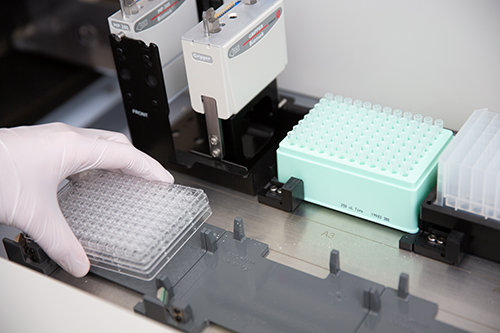Sample optimization is often a key step towards structure determination. Fine tuning of the sample preparation conditions can reduce heterogeneity and a ‘secret ingredient’ may increase the stability of a protein. It is a good idea to combine preliminary results from structural studies with the results obtained from the quality control measurements as a basis to optimise the sample conditions. The SPC facility provides an integrated package of quality control coupled to sample optimization.
Thermofluor (DSF) optimisation screen
A screen of 96 different conditions varying buffers, salts and a range of additives are tested to see whether the protein becomes more stable as reflected by the melting curve. Details and prices on request (spc@embl-hamburg.de).
nano Differential scanning fluorimetry (nanoDSF) optimisation screen
In contrast to conventional DSF methods, nanoDSF uses tryptophan or tyrosin fluorescence to monitor protein unfolding. Both the fluorescence intensity and the fluorescence maximum strongly depends on the close surroundings of the tryptophan. Therefore, the ratio of the fluorescence intensities at 350 nm and 330 nm is suitable to detect any changes in protein structure, for example due to protein unfolding.
Using the 96 different conditions varying buffers, salts and a range of additives on the nanoDSF, optimal buffer components can be identified for each individual protein for further purification, protein buffer optimization, identifying optimal conditions for storage, assay screening, and crystallization. Details and prices on request (spc@embl-hamburg.de).
